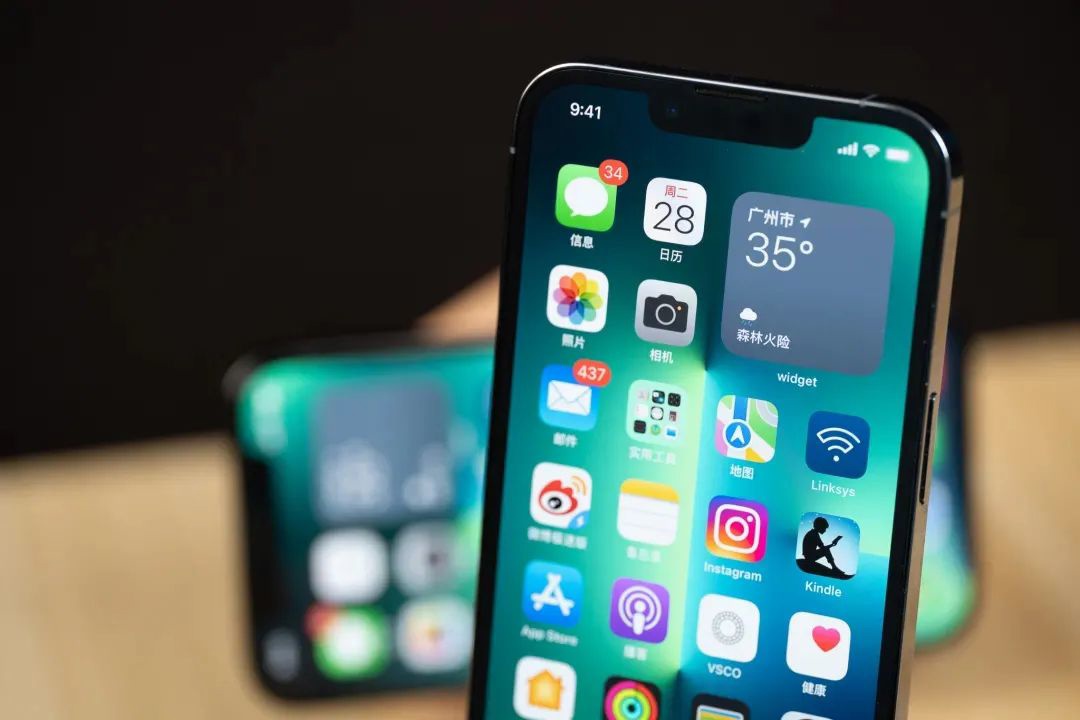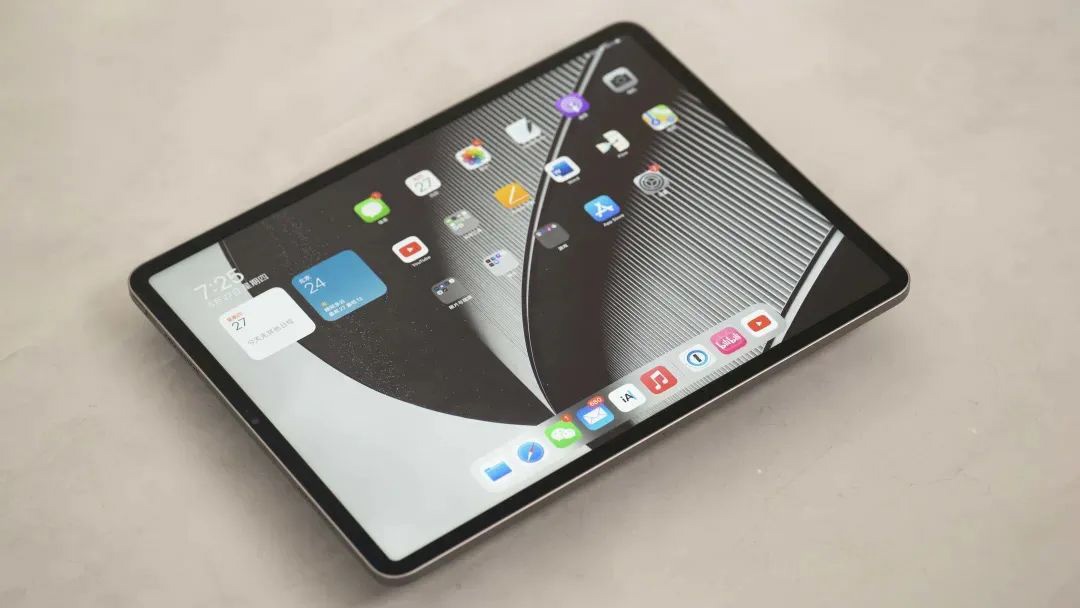Home >Technology peripherals >It Industry >Apple's high refresh rate and heat dissipation stretch the crotch
Apple's high refresh rate and heat dissipation stretch the crotch
- WBOYWBOYWBOYWBOYWBOYWBOYWBOYWBOYWBOYWBOYWBOYWBOYWBforward
- 2023-10-21 15:17:01752browse
At WWDC in 2017, Apple released the second-generation iPad Pro. The biggest highlight of this product is the newly upgraded screen, with the maximum refresh rate upgraded from 60Hz to 120Hz. The iPad Pro 2017 has become the first Apple high-refresh device that consumers can buy. Apple fans who want to experience high-refresh on the iPhone will have to wait until the iPhone 13 Pro, which will be released four years later.

Recently, an overseas whistleblower posted on the X platform that the iPad mini 7 will no longer be available. It will be equipped with a high refresh screen. Previous news showed that this small-size tablet will be announced and sold in the first half of 2024. Users who had been looking forward to the iPad mini 7 must not be happy after hearing this news.
To this day, high screen refresh, a technology that has long been popular on Android devices, is still a means in Apple’s hands to differentiate product positioning and artificially reduce the appeal of low-end products. Ironically, when using Apple devices with high refresh rates, in some scenarios they suffer from experience degradation brought about by this "advanced" technology.
They are all high brushes, What is the difference between ProMotion?
When promoting the selling point of high refresh rate, Apple often uses the English phrase "ProMotion", which means adaptive refresh rate. In other words, the screen of Apple devices does not refresh at 120Hz from time to time, but adjusts within a range. For example, the refresh rate range of the screen on the iPad Pro is 24Hz-120Hz, and the refresh rate range on the iPhone 13 Pro is 10Hz-120Hz.
Compared with the fixed refresh rate, the advantage of ProMotion adaptive refresh rate is that it can dynamically adjust the screen refresh rate according to different scenarios to bring a better experience. Like many traditional movie videos, the frame rate is about 24 frames. If the screen refresh rate is synchronized with it, it will naturally bring a better experience and avoid screen tearing, stuttering and other phenomena caused by the misalignment of the two. In information flow scenarios such as browsing Weibo, the refresh rate is increased and the experience will be smoother and smoother. Many people who have used high-refresh screen mobile phones say that when they use a 60Hz screen device again, they can obviously feel the experience decline.

On Apple’s high-refresh devices, the screen has multiple levels of refresh. rate to cope with different segmented scenarios. Apple developer technical documents show that the iPhone 13 Pro series has 120Hz (8ms), 80Hz (12ms), 60Hz (16ms), 48Hz (20ms), 40Hz (25ms), 30Hz (33ms), 24Hz (41ms), 12 gears: 20Hz (50ms), 16Hz (62ms), 15Hz (66ms), 12Hz (83ms), 10Hz (100ms).
High-refresh screens on Android phones appeared much earlier than the iPhone. The Razer gaming phone released in 2017 was equipped with a 120Hz screen. Of course, high-refresh screens first appeared on mobile phones in order to bring higher frame rates to users in gaming scenarios, thereby creating an advantage in gaming experience. With the gradual popularity of high-refresh on Android phones, variable refresh technology is also developing.
However, compared to Apple, the variable refresh function on Android phones is often rougher. For example, some manufacturers’ mobile phones simply divide the refresh rate into three gears: 120Hz, 60Hz, and 10Hz, which correspond to information flow and normal. Applications, static scenes, switching between different scenes, system misjudgment of scenes, etc. will all bring unpleasant experiences such as lags and frame drops.
And Apple, which has advantages in system ecology, has done better in this regard. Apple has said that the high-refresh iPhone will use high-sampling technology to predict the user's next operation in advance. For example, when sliding the gesture bar at the bottom of the screen, the screen refresh rate will quickly increase, allowing users to call out the background, switch applications, etc. , for a smoother experience. In 2022, Apple also opened up a maximum refresh rate of 120Hz to many third-party applications, finally bidding farewell to 60Hz animation effects.
The idea is beautiful, The reality is cruel
From the perspective of product concept, Xiaolei believes that the top-level design of Apple’s ProMotion technology is better , the scenarios taken into account and the adaptation to third-party applications seem to be better.
However, in terms of actual experience, Apple's high-brush devices still face many problems. Many netizens have reported that both the iPhone 13 Pro and iPhone 14 Pro series have a refresh rate lock of 80Hz. Although the hardware itself supports 120Hz, in most cases, it is difficult to trigger the highest refresh rate, and 80Hz is often the ceiling.

The reason why Apple "swung its sword to death" is not complicated at all. It is to alleviate the problems of heating and battery life. In fact, as early as 2020, there were reports that the iPhone 12 Pro was already testing a high-refresh screen. But in the end, the iPhone 12 Pro failed to use the high-refresh screen as expected. The most direct reason was that the heat was uncontrollable. The iPhone 12 series is the first generation of 5G Apple mobile phones. The problems of overheating and reduced battery life caused by the 5G network have been criticized by countless people. If the screen is forcibly refreshed, the consequences may be disastrous.
The 5G power consumption problem on the iPhone 13 and iPhone 14 series has been greatly improved. However, the motherboard and heat dissipation design of Apple mobile phones still have very big flaws. Recent generations of iPhones have used internal space to the extreme, but heat dissipation is not a high priority. Just when Android brands are using liquid cooling, greatly increasing the heat dissipation area, and releasing crazy performance, Apple is still using double-layer motherboards to sandwich SoCs for ten years.
Once the heating problem becomes serious, Apple will have to spend its own efforts, and it will be logical to cut the refresh rate. Thanks to the ample space for heat dissipation, the heating problem caused by the high brush technology on the iPad Pro is not that serious. Therefore, you can usually enjoy a full 120Hz experience on iPad Pro. However, Xiaolei interviewed iPad Pro users around him, and they all made it clear that the battery life of high-refresh iPads has dropped significantly. However, the iPad Pro’s battery capacity and battery life have obvious advantages over the iPhone, and everything is still acceptable.

Generally speaking, the general direction of Apple’s ProMotion technology is No problem, refresh rate adaptation can not only improve the experience, but also ensure battery life. However, in actual use, the refresh rate is artificially limited, so it is difficult to truly reflect the technical advantages of high refresh rate.
Of course Android phones have similar problems, but Android phones generally have better heat dissipation conditions and give users the option of turning on the adaptive/smart refresh rate. For those who want to eliminate software misjudgments and prioritize smoothness, just turn on the global 120Hz. This is the same as the automatic brightness function and turning on the manual brightness directly. It is simple and crude, but it still solves the problem. Apple obviously does not give users this choice.
AppleNeeds a cooling revolution
In the iPhone 15 series released last month, iPhone 15 Pro and iPhone 15 Pro Max use On to the A17 Pro, it is the first 3nm process chip. However, as soon as the iPhone 15 Pro series was released, it encountered heating problems and attracted overwhelming doubts. Apple had to make improvements in subsequent updates to iOS 17.
The heating problem of iPhone 15 Pro is caused by a combination of factors. On the one hand, the power consumption increase brought by the 3nm process is not as expected, and the peak power of the A17 Pro is higher than the previous generation chip; on the other hand, the titanium alloy on the iPhone 15 Pro has lower thermal conductivity efficiency, and there is no improvement in the heat dissipation design. It can be seen from the disassembly diagram of iFixit that inside the fuselage, there is only a graphite heat dissipation layer with a limited coverage area, which is prepared for the wireless charging circle. As for the VC heat dissipation layer, liquid cooling and other devices that are common on Android phones, Apple does not use them at all.

In electronic equipment, as long as room temperature superconducting technology is not realized, the chip will inevitably To generate heat. The consequences of the delay in heat dissipation are that the iPhone camera gets hot after being used for a long time, the screen brightness and frame rate are increased and it gets hot, the frame drops after playing a game, the 5G network gets hot and loses power quickly after being used for a long time, and the chip with strong performance Can't perform as well as it should. Cutting the 120Hz screen into an 80Hz screen is just one of the consequences of rushing to dissipate heat.
The iPhone has always been regarded as the flagship experience, but advanced hardware configuration is also the foundation for building a good experience. Now, poor heat dissipation has become the main culprit that leads to the deterioration of iPhone product experience. Apple urgently needs to revolutionize itself in heat dissipation technology.
This article comes from the WeChat public account: Lei Technology (ID: leitech), author: Lei Technology Digital 3C Group
Advertising statement: External jump links contained in the article (Including but not limited to hyperlinks, QR codes, passwords, etc.), used to convey more information and save selection time. The results are for reference only. All articles on this site include this statement.
The above is the detailed content of Apple's high refresh rate and heat dissipation stretch the crotch. For more information, please follow other related articles on the PHP Chinese website!

